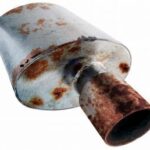When you prepare wood surfaces correctly with the right primer choices and other pre-painting steps, you start your painting project on the right foot. Whether you’re working with unfinished wood, painted wood, or varnished wood, each surface requires its own special preparation before you can paint successfully. The right primer and the right cleaning regimen can mean the difference between a smooth, lasting, pro-caliber finished product, and a globby, drippy mess of a job that quickly shows wear and tear. Painting is one of the most popular DIY home improvement projects, but many non-professional painters don’t have sophisticated knowledge of what primer choices are appropriate for different surfaces, or how to adequately clean different kinds of surfaces before primer is applied. Read on to learn how to prepare wood surfaces so that your DIY home improvement painting project turns out perfect.
Unfinished Wood
When you prepare wood surfaces that have never been painted before, like unfinished wood, you don’t need to do the careful washing that more weathered surfaces sometimes need. However, unfinished wood does require a little bit of TLC to prepare the surface before you take out the paintbrush. Start by gently sanding your unfinished wood surface to remove any splinters or small imperfections. Then, wipe your unfinished wood down with a slightly damp cloth to remove any sawdust or grit that’s lingering on the surface. Now, prepare your wood surface for painting by applying a quick-drying oil or latex based primer. These non-water-soluble primers will protect the delicate surface of your unfinished wood from absorbing damaging water or other liquids, ensuring that the surface stays smooth and unblemished for a long time to come. Plus, the inexpensive primer keeps the wood from soaking up all of your expensive paint, saving you money so that you get maximum coverage for a minimum cost. Once your primer is dry, spackle in any holes or dents, and apply caulk in any cracks on your unfinished wood surface. Then, you’re ready to paint!
Tip: The kind of primer you use should match the kind of paint you’ve chosen: latex primers go with latex paints, and oil-based primers go with oil-based paints.
Painted Wood
It may be tempting not to prepare wood surfaces that have already been painted once; after all, they’re already primed, right? Wrong. To prepare the surface of painted wood, start by washing the surface with soap and water, then rinsing thoroughly with clear water to remove any lingering dirt or residue. Once the painted wood surface is dry, gently sand it to buff away any loose chips of paint that are hanging off or poking out from the surface. Wipe the painted wood surface down with a damp rag or cloth to carry away any dislodged chips or splinters, then apply your primer. Use the same kind of fast-drying latex or oil based primer that you would on unfinished wood, but with one change: instead of giving an all-over coat, you only need to prime areas of your painted surface where spots of bare wood visibly peek through the previous layer of paint. Let your primer spots dry, then you’re ready to paint.
Tip: When re-painting painted wood, match the base of the new layer of paint to the old. If you have a previous coat of oil-based paint, stick with an oil-based primer and paint for your new color. If your painted wood surface was previously painted with a latex-based paint, opt for latex for your new painting project.
Varnished Wood
When you prepare wood surfaces that have already been varnished, you need to do a bit more vigorous sanding than you do when you’re working with unfinished wood, or with wood surfaces that have been painted. Rough sanding will de-gloss the varnished surface, scoring it and making it slightly uneven so that your primer will grab firmly on the surface rather than sliding right off, as it would on an unprepared smooth varnished wood surface. Start preparing the wood surface by washing, rinsing and drying the varnished wood surface the way you would with painted wood. Then, sand vigorously to degloss the area, and wipe the area down with a damp rag to carry away the gritty, dislodged scraps of varnish. Then, apply a coat of fast-drying oil or latex based primer all over the varnished wood surface, leaving an appealing surface for your paint to grab onto later. Once the primer is fully dried, it’s time to get painting!
Tip: Switching from a varnished finish to a painted one is one of the most eye-popping transformations for wood furniture, and can instantly change the whole look and feel of a piece.





